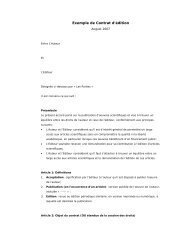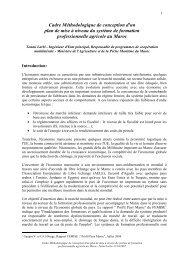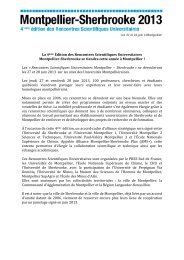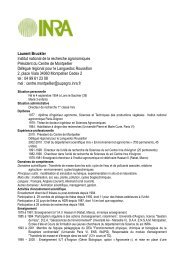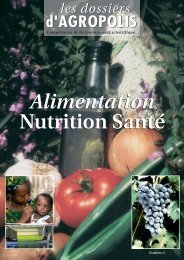Yield Gap Analysis: Implications for Research and Policy
Yield Gap Analysis: Implications for Research and Policy
Yield Gap Analysis: Implications for Research and Policy
Create successful ePaper yourself
Turn your PDF publications into a flip-book with our unique Google optimized e-Paper software.
N fertilizer rate (kg N ha -1 )<br />
NUE (kg grain kg -1 N fertilizer)<br />
High yields <strong>and</strong> high nitrogen use efficiency (NUE) are possible*<br />
•Based on data from 123 fields farmer’s irrigated fields in 2005-2007 seasons, Nebraska, USA.<br />
Grassini et al., submitted, Field Crops Res.<br />
220<br />
200<br />
180<br />
160<br />
140<br />
90<br />
80<br />
70<br />
60<br />
50<br />
12.7 13.3 kg ha -1<br />
Continuous maize Soybean-maize<br />
U.S. maize averages<br />
13.5 13.4<br />
Continuous maize Soybean-maize<br />
Tillage system:<br />
Conservation (NT): strip-,<br />
ridge-, <strong>and</strong> no-till.<br />
Conventional (CT): disk<br />
• Higher N rates but also higher NUE<br />
compared to U.S. averages,<br />
especially under soybean-corn<br />
rotation due to higher yields <strong>and</strong><br />
lower N rate than continuous corn.<br />
• No difference in N fertilizer rate<br />
under continuous corn with NT or<br />
CT; under soybean-corn rotation, N<br />
fertilizer tended to be higher under<br />
NT than CT.<br />
• NUE tended to be higher under<br />
conventional tillage due to (i) higher<br />
yields at the same N rate under<br />
continuous corn <strong>and</strong> (ii) same yield<br />
with lower N rate under soybeancorn<br />
rotation.




